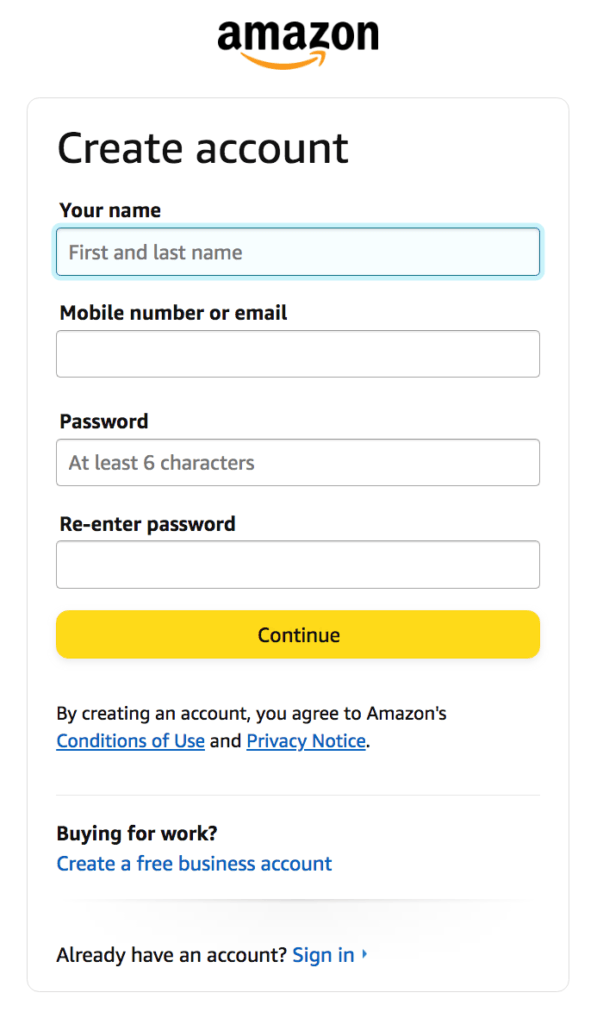
Online shopping has revolutionized how we purchase electronics, offering unparalleled convenience and options at our fingertips.
No more dealing with crowded stores or limited selections.
Instead, you can browse countless products, compare features and prices, and make an informed decision—all from the comfort of your home.
Among the myriad of options available, platforms like Amazon stand out due to their extensive range, reliable customer service, and user-friendly interface.
Amazon is often the go-to choice, but there are other reputable platforms too. This guide aims to help beginners navigate the world of online electronics shopping.
Whether you’re eyeing the latest smartphone, a new laptop, or any electronic gadget, this guide will walk you through the entire process—from setting up an account to scoring the best deals.
Advantages of Buying Electronics Online
When it comes to shopping for electronics, the internet offers a treasure trove of benefits that traditional stores simply can’t match.
The sheer variety available online is staggering, with options spanning hundreds of brands and models, allowing you to find exactly what you’re looking for without ever leaving your couch.
One of the biggest draws of online shopping is competitive pricing.
E-commerce platforms regularly feature deals, discounts, and seasonal sales that you rarely see in physical stores.
Sites like Amazon offer flash sales and daily deals, making it possible to snag your desired gadget at a fraction of its original price.
The convenience factor is another major plus. With online shopping, your new device gets delivered straight to your doorstep, often with free shipping options.
There’s no need to arrange for transportation or battle through traffic. It’s all about hassle-free shopping.
Another key advantage is the ease of comparison shopping.
Online platforms provide tools that let you juxtapose different products based on features, reviews, and prices.
This makes it easier to weigh your options and make an informed decision.
In short, buying electronics online offers an extensive selection, attractive pricing, unparalleled convenience, and easy comparison, ensuring you get the best value for your money.
Getting Started: Setting Up Your Account
Choosing the right platform sets the stage for a smooth shopping experience.
Trustworthy websites like Amazon are user-friendly and offer a robust buyer protection policy.

It’s essential to start by selecting a platform renowned for its reliability and customer service.
Once you’ve chosen your platform, creating an account is your next step. Typically, this involves providing an email address and setting a secure password.
Make sure your password is strong and unique to protect your information.
Payment methods are also crucial. Most online stores accept a variety of payment options, from credit cards to digital wallets like PayPal.
Having multiple payment methods on hand can make the checkout process smoother and more flexible.
Understanding buyer protection policies is also vital. These policies ensure you have a safety net in case something goes wrong with your purchase.
Look for platforms that offer robust return policies, secure payment options, and customer service support to resolve any issues swiftly.
Researching Products Effectively
Careful research is the cornerstone of a successful electronics purchase. Start by thoroughly reading product descriptions.
Don’t skip over the details, as they often contain crucial information about the features and specifications that matter most.
Understanding technical specifications can seem daunting, but it’s essential for ensuring that the product meets your needs.
Look for key specs like processor speed, storage capacity, screen resolution, and battery life. These elements will directly impact the device’s performance.
Customer reviews and ratings are invaluable. They provide real-world insights into the product’s performance and reliability.
Pay attention to both positive and negative reviews to get a balanced view. Verified purchase badges often indicate authentic feedback.
Online comparison tools can also be a game-changer. Use them to juxtapose multiple products side-by-side, highlighting the differences in features, prices, and reviews.
This makes it easier to identify the best option for your needs and budget.
Key Factors to Consider When Buying Electronics
(1) Price vs. quality is a critical balance to strike. Cheaper products might save you money upfront, but investing in higher quality often pays off in longevity and performance.
(2) Brand reputation can be a reliable indicator of quality and customer service. Established brands usually offer better warranties and more reliable products.
(3) Warranty and return policies should never be overlooked. A solid warranty and a hassle-free return policy give you peace of mind, knowing you’re covered if something goes wrong.
(4) Compatibility with other devices matters, especially if you’re adding to an existing tech ecosystem. Check if the new gadget works seamlessly with your current devices.
(5) Energy efficiency is another important factor. Efficient products may cost more initially but can save you money in the long run through lower energy bills. Look for Energy Star ratings or similar certifications.
Navigating Deals and Discounts
Seasonal sales are gold mines for saving money.
Events like Black Friday and Cyber Monday often feature deep discounts on a wide range of electronics, making them excellent times for big purchases.
Daily deals and lightning offers on platforms like Amazon offer limited-time discounts. These deals move fast, so it’s worth checking them out regularly to catch a bargain.
Coupon codes are another handy tool for slashing prices. Websites and extensions like Honey can automatically find and apply the best coupons at checkout, ensuring you never miss a discount.
Price tracking tools like CamelCamelCamel let you monitor price changes over time. By keeping an eye on fluctuations, you can pounce when the price drops to a desired level.
Understanding Product Listings
New vs. used/refurbished items come with different considerations. New items usually come with a manufacturer warranty, while used or refurbished products can offer significant savings. Weigh the risks and benefits before deciding.
Seller types vary from direct sales by the platform (like Amazon itself) to third-party sellers. Buying directly from Amazon often provides added assurances, but many reputable third-party sellers also offer quality products.
Estimated delivery dates are crucial to check. Delays can happen, especially if the product is shipping from overseas. Always verify the delivery timeline to avoid surprises.
Identifying authentic products is especially important to avoid counterfeits, which can sometimes be a risk with third-party sellers. Look for products listed as “Fulfilled by Amazon” or those with high seller ratings to ensure authenticity.
Making the Purchase
Adding items to your cart is straightforward but double-check you have the right product and quantity before moving on to the next step. Any mistakes here can lead to unnecessary hassle later.
Selecting shipping options is the next crucial step. Many platforms offer various shipping speeds and even free shipping on certain items. Weigh your need for speed against potential shipping fees.
Applying discounts or gift cards can provide additional savings. Ensure any promo codes are applied before finalizing your purchase. Most platforms have a dedicated field for entering these codes during checkout.
Reviewing the order before confirming is essential. This final check helps catch any errors in your address, payment method, or item selection. Plus, it’s your last chance to spot any additional fees or shipping charges that might have crept in.
After the Purchase
Tracking your order keeps you informed about its journey from the warehouse to your doorstep. Most platforms provide tracking numbers and regular updates via email or app notifications.
Problems with your order can sometimes happen. If your package is delayed or arrives damaged, contact customer service immediately. Most reputable platforms have efficient support teams ready to help.
The return and exchange processes should be straightforward if you’ve chosen a reliable platform. Familiarize yourself with the return window and any conditions for returning items. Keep original packaging and receipts handy to streamline the process.
Leaving feedback and reviews benefits both other shoppers and the seller. Share your honest experience with the product and any interactions with customer service. Your insights can help others make informed decisions.
Tips for Safe Online Shopping
Securing your account with strong passwords is your first line of defense. Avoid using easily guessable passwords and consider using a password manager to keep track of them.
Being cautious with personal information is crucial. Only provide the necessary details and ensure the website has secure connections (HTTPS). Never share sensitive information over unsecured networks.
Recognizing and avoiding scams can save you from a lot of trouble. Be wary of offers that seem too good to be true, and double-check the credibility of unsolicited emails or messages offering incredible deals.
Using secure payment methods adds an extra layer of protection. Options like credit cards and digital wallets often offer better fraud protection compared to debit cards or direct bank transfers.
Conclusion
By now, you should feel well-equipped to navigate the world of online electronics shopping.
With a variety of platforms and extensive product options, the convenience and benefits are clear. Just remember to set up your account securely, research thoroughly, and take advantage of discounts and deals.
Applying the tips and strategies we’ve covered ensures you’re making informed decisions and getting the best value for your money. Happy shopping!
Additional Resources
Familiarizing yourself with common electronic terms can be incredibly helpful. Having a glossary on hand can demystify jargon and make specifications much easier to understand.
Consulting reputable review sites provides another layer of assurance. Websites like CNET and TechRadar offer in-depth reviews and expert opinions, helping you make more informed decisions.
FAQs about online electronics shopping can solve many common queries and concerns. These resources often address issues such as shipping times, return policies, and payment methods.
Using these additional resources can significantly enhance your online shopping experience, making it smoother and more satisfying.


